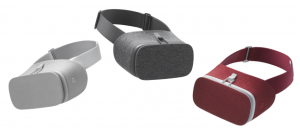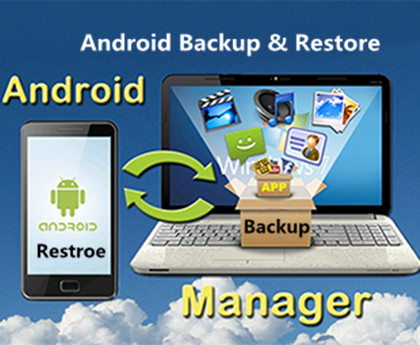By Selena KomezUpdated on October 06, 2016
The Google Pixel and Google Pixel XL are OFFICIAL.
Google has just officially announced its much-anticipated Pixel phones; the Pixel and Pixel XL. We’re live at Google’s London UK event, mirroring the main one taking place in San Francisco, US, where the firm unwrapped the new Android 7.1 Nougat devices which will apparently usurp Google’s long-standing Nexus series.
This launch has been a long time coming and a lot has been said prior to today about Google’s plans for its mobile division, the decision to axe its Nexus brand, and how it will differentiate its Pixel phones from other Android phones available from its hardware partners.
Well, there’s quite a lot to get through, so let’s get the basics out of the way first. This is what Google’s new Pixel phones looks like. First, the Google Pixel:
![]()
And now we’ll take a quick look at the specs for both the Google Pixel and Google Pixel XL:Google Pixel Specs & Hardware
Dimensions: 143.8 x 69.5 x 8.6 mm
Weight: 143g
Display: 5in 1920 x 1080 pixels
Processor: Qualcomm Snapdragon 821 quad-core 2.1GHz
GPU: Adreno 530
RAM: 4GB
Storage: 32GB or 128GB
MicroSD: Up To 256GB
Rear Camera: 12MP
Front Camera: 8MP
Software: Android 7.1 Nougat
Battery: 2770mAh Quick Charge
Colours: Silver, Black
Google Pixel XL Specs & Hardware
Dimensions: 154.7 x 75.7 x 8.6mm
Weight: 168g
Display: 5.5in 2560 x 1440 pixels
Processor: Qualcomm Snapdragon 821 quad-core 2.1GHz
GPU: Adreno 530
RAM: 4GB
Storage: 32GB or 128GB
MicroSD: Up To 256GB
Rear Camera: 12MP
Front Camera: 8MP
Software: Android 7.1 Nougat
Battery: 3450mAh Quick Charge
Colours: Silver, Black
As you see, the duo are for the most part identical except for the physical dimensions, the display size and resolution, and the presence of a higher milliamp-hour rated battery cell in the Pixel XL. Design-wise it’s what we already saw in the leaks ahead of the launch; an aesthetic which does indeed pull in some reminders from the Nexus heritage in terms of overall shape.
“With Pixel,” said Brian Rakowski, Google’s VP of Product Management, “we obsessed over every detail, from the industrial design to the user experience. We carefully sculpted the surfaces of the phone, and rounded the edges to make it easy to grip. We used 2.5D Corning® Gorilla Glass 4 on the front display and back glass to accent the aerospace grade aluminum body. The glass on the back also features Pixel Imprint, our fingerprint sensor, which is placed on the back of the phone where your finger expects it. You can even swipe it to access your notifications. And no matter what you’re using your phone for, you’ll need a battery that lasts all day and charges fast — up to seven hours in 15 minutes.”
Google is pretty pleased with the Pixel’s cameras. Here’s what it said at launch:
“With a best-ever 89 DxoMark Mobile score, Pixel’s camera lets you take stunning photos in low light, bright light or any light. #Nofilter needed. Catch action shots as they happen with Smartburst, which takes a rapid-fire sequence of shots. Use Lens Blur to achieve shallow depth of field and bokeh effects, making your subject pop. And capture dramatic landscapes or make faces glow with new exposure controls.”
The main distinguishing feature is that two-tone back panel design, some seem to love it, others loathe it; we’re fairly neutral to be honest, it’s not hideous but it doesn’t make us go “hot damn I need that sexy phone in my life!”, either.
Both Pixel and Pixel XL run the latest Android 7.1 Nougat build which is packed with software features, many of which we’ve already seen aboard 7.0 Nougat on the existing Nexus line-up. However, there are some new capabilities, as well as specific and unique tailored features baked-into the Pixel phones.
First With Google Assistant
A solid portion of Google’s keynote was dedicated to Google Assistant, the search giant’s first steps towards a personal AI for your home. Assistant will power Google’s Home hub device, which is coming later this year, but it can also be found inside both Pixel phones.
The idea with Assistant is that you can talk to it as you would a person. Simply say, “OK, Google,” and Assistant will be on hand to do your bidding, whether playing music, reading emails or regaling you with the morning’s headlines.
“Ask it for a brief update on your day or to play a video on YouTube,” said Google. “Look up traffic on the way home from work or when the nearest pharmacy closes. You can even say “show me my camping photos with Andrew” and it’ll instantly display the photos you’re looking for. Your Assistant can also offer help with what’s on-screen in any app. So if your friend texts you to meet up at a new restaurant, you can just say “navigate there’.”
Make no mistake, software like Assistant and Amazon’s Alexa will be the new battlefield tech companies do battle on. The implications of software like Alexa and Assistant are enormous; they’ll appear inside phones, computers, cars and even white goods eventually, I imagine. This trend will be huge once consumers catch on and locking Assistant inside the Pixel phones is just one of the USPs Google is pushing with its new phone operation.
First With Google DayDream
The Pixel phones are also the first Android phones to support Google’s VR platform, Daydream. It also announced its Daydream View VR headset, which is designed to be the most comfortable VR headset in its class. But more on this tomorrow, once we’ve had time to gestate EVERYTHING that Google discussed tonight (or, this morning, if you’re in the US).

Google is keen to push the professional BYOD angle this time with added security and productivity features intended for business users.
It also retains some other features we’re familiar with, but one feature in particular the Google Assistant personal assistant, has been much upgraded from the last time we saw it at Google I/O 2016. As before, it responds to voice commands and ties in with Google Now, as well as Google’s other services such as Calendar, Mail, and Maps, but it offers a much more detailed interaction thanks to Google’s AI developments. Google talked a lot about how AI is the “next big thing” for its devices and software development, and Google Assistant seems to be a lynchpin of this.
As well as features typical of virtual assistants such as Siri, things like scheduling appointments, activating searches, and asking questions, Google Assistant was demonstrated offering in-depth conversations and learning about you and what’s important in your life.
“The assistant is conversational—an ongoing two-way dialogue between you and Google that understands your world and helps you get things done,” says Google. “It makes it easy to buy movie tickets while on the go, to find that perfect restaurant for your family to grab a quick bite before the movie starts, and then help you navigate to the theater. It’s a Google for you, by you.”
“The assistant is an ambient experience that will work seamlessly across devices and contexts. So you can summon Google’s help no matter where you are or what the context. It builds on all our years of investment in deeply understanding users’ questions.”
Read more:
The Google Pixel Phone is Exactly what you Wanted
How to Recover Deleted Data from Pixel
How to Transfer iPhone Data to Pixel
How to Transfer Samsung Data to Pixel
How to Transfer Android File to Pixel
How to Backup & Restore Data on Pixel
Prompt: you need to log in before you can comment.
No account yet. Please click here to register.
